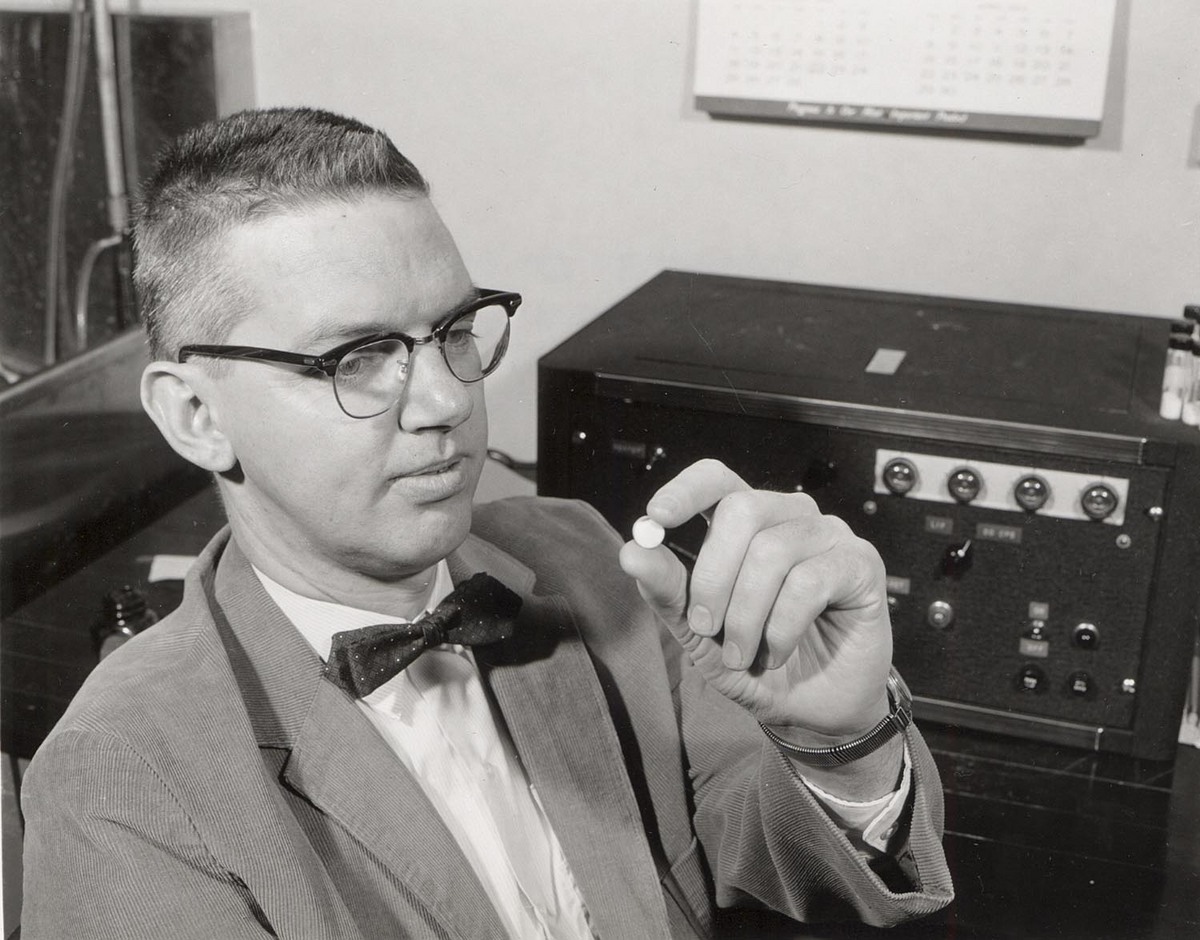Medical physics publisher marks 30 years of success

John Cameron, founder of Medical Physics Publishing, invented devices to check the output of X-ray machines. When the probe of this dosimeter is heated after being exposed to ionizing radiation, it measures the radiation exposure.
1962 photo: UW–Madison Archives
A small Madison publisher focused on the use of radiation in medicine has just celebrated 30 years in business. Medical Physics Publishing focuses on technology used to diagnose and evaluate disability and disease — X-ray, CT, MRI, PET and ultrasound — and on radiation treatment for cancer.
With three employees, the company publishes five or six new titles per year and has a backlist of 165 titles. The business was founded in 1985 by John Cameron, a medical physicist who started the University of Wisconsin–Madison medical physics department, considered the largest in the world.

“John knew that big publishers were not interested in the small-market publications that the field needed,” says Paul DeLuca, emeritus professor of medical physics and longtime member of the Medical Physics Publishing board of directors. “He was extremely clever about identifying niche needs and meeting them.”
Cameron was also adept at recruiting expert volunteers to write, edit and lead the nonprofit publisher, DeLuca adds. “To a certain extent, it was a labor of love. If the faculty had said, ‘We don’t want to do this,’ it would not have changed their lives, but the fact they have done this volunteer work for decades emphasizes the social value of these publications.”
Cameron, a passionate believer in the benefits derived from the marriage of medicine and physics, was willing to go outside the university if necessary. In the 1960s, his concern about the safety of X-ray machines led him to start Radiation Measurements, Inc., to make devices to calibrate those machines to reduce dangerous overexposures. The company quickly expanded its products to include many other tools used by medical physicists, including test devices for mammography, CT and ultrasound. In 1987 RMI was acquired by Gammex, which is now a subsidiary of Sun Nuclear Corporation. The Gammex headquarters remains in Middleton.
In the 1980s, Cameron encouraged his UW colleague Richard Mazess, who was developing one of the first osteoporosis scanners, to form Lunar, Inc., to produce them. Lunar is now owned by GE Medical, which continues to build bone density scanners in Madison under the Lunar brand.

At UW–Madison, Cameron recruited faculty members who remain active across the full range of medical physics. “John was a visionary who expanded how physics could contribute to improving patient care,” says Jim Zagzebski, professor emeritus and past chair of medical physics, and chair of the publisher’s board.
“He was a creative spark in the department. He would come to my office, sit down, and say, ‘I think you are doing a good job here, but have you thought about this?’ He was very supportive, never undermining, and the main reason I am still here.”
Cameron passed away in 2005. Medical Physics Publishing continues to sell his 1999 textbook “Physics of the Body.” “It’s still relevant, and it’s still accurate,” says Bobbett Shaub, the publisher’s general manager.
Tags: books, health & medicine, physics, spinoffs, technology




